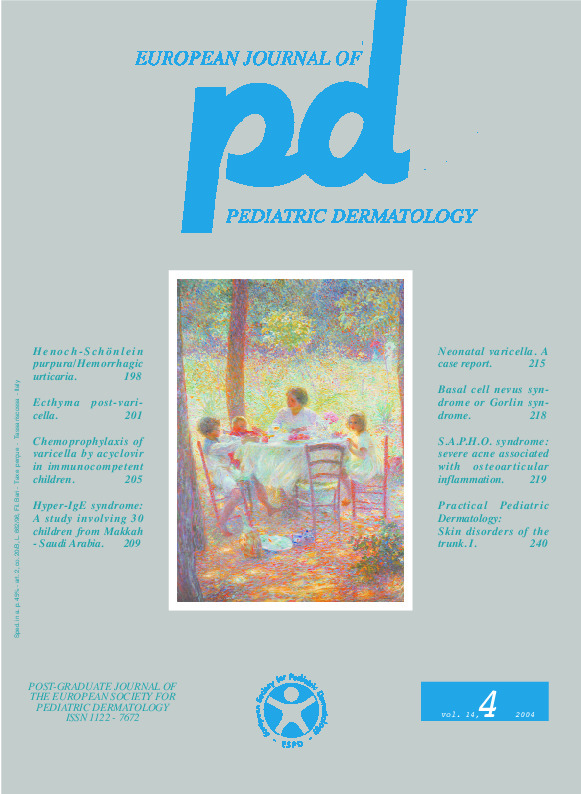Skin disorders of the trunk. I.
Downloads
How to Cite
Bonifazi E., Annicchiarico G., Inverardi D., Milano A. 2004. Skin disorders of the trunk. I. Eur. J. Pediat. Dermatol. 14 (4): T721-T736.
pp. T721-T736
Abstract
The skin covering the trunk represents more than one third of the entire skin. In the developed countries this part of skin is usually covered, besides the "décolleté", which is more exposed, mainly in females. The upper part of the back is mostly exposed to the intermittent sun exposure of playing type and therefore it is the most frequent site of sunburns and consequent actinic lentigo. The upper part of the chest, belongs to the so called "flush area", which also comprises the face and neck. This area is particularly susceptible to vasodilating stimuli, both of psychic nature, such as decency reddening, and pharmacological, such as histamine in mastocytosis and 5-hydroxytryptamine in carcinoid syndrome. Some skin disorder, which are called acrolocated or centrifugal, are preferentially located on the limbs, mainly their distal part, whereas other skin disorders, which are called centripetal, are preferentially located on the trunk. From a pathogenetic point of view, centrifugal skin disorders are related to the slowed down blood flow. On the other hand, centripetal skin disorders are probably related to other factors such as increased temperature, decreased sun exposure, etc.. Some skin disorders such as pityriasis lichenoides and lichen ruber planus preferentially affect the trunk in some individuals, the limbs in other individuals and finally both of them simultaneously in others. The distribution of lesions in these skin disorders is probably related to constitutional factors more than to the disease itself.Keywords
skin disorders, Trunk

